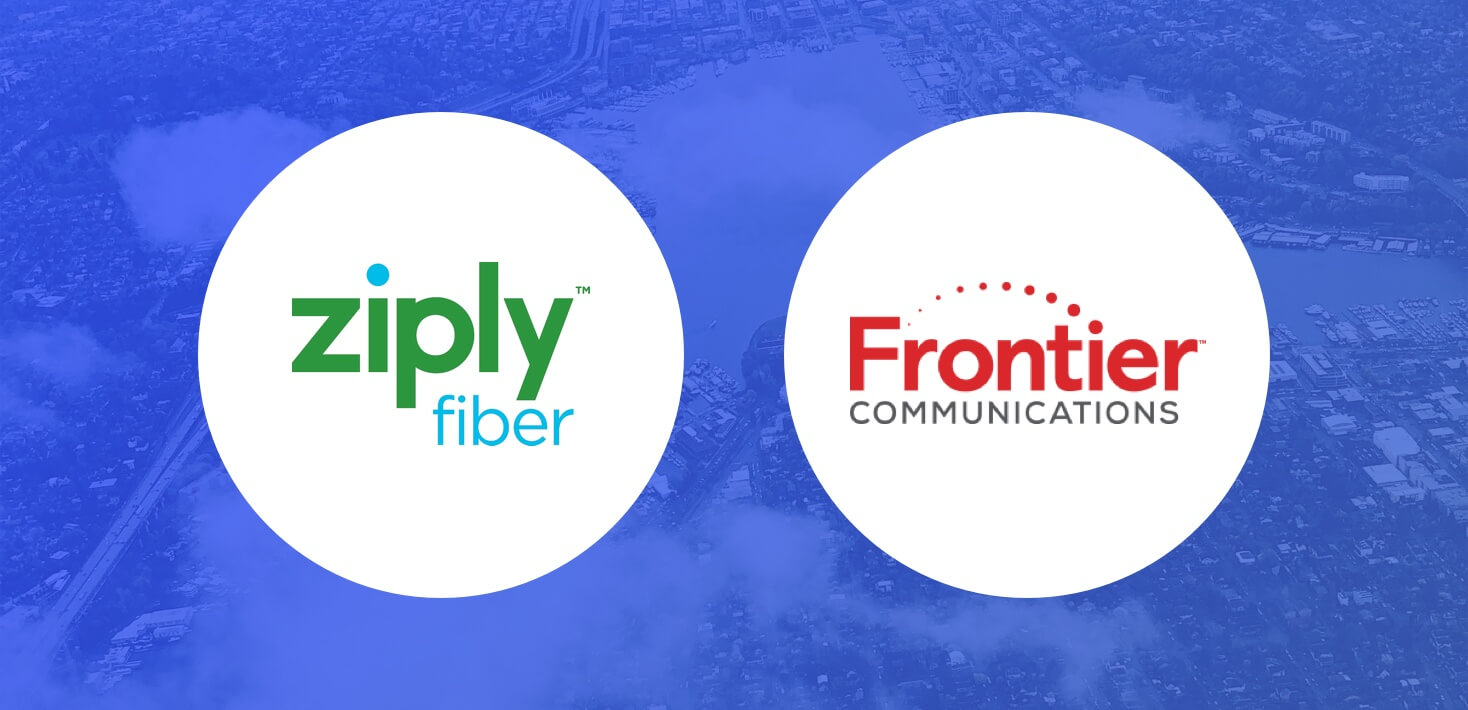Ziply Fiber acquired Frontier’s Fiber ‘Fios’ and DSL networks in Washington, Oregon, Montana and Idaho in May of 2020.
The deal was related to Frontier’s 2021 bankruptcy agreement, leading to an attractive buyout price for Ziply. Expanding fiber-to-the-home service will be Ziply’s main focus in coming years.
For existing Frontier customers in the Pacific Northwest, this means that as of 2024 you should be seeing the brand name “Ziply Fiber” on your bills, if the company hasn’t contacted you already. Existing contracts are being honored, but they will be slowly phased out over the coming year.
As you can imagine, the transition has caused some confusion locally. In this post, we’ll cover Ziply’s network upgrade promises, differences in plans and pricing, and what you can expect as a current or prospective customer.
Will Ziply Fiber be faster than Frontier?
As it stands, Ziply is the same network as Frontier, just with different branding and billing. Improvements to hardware in the field have started, but most customers won’t notice much technical difference in their connection.
As before the transition, Ziply operates two diffferent networks in the northwest: a fiber-to-the-home network with gigabit speeds, and a slower DSL network with speeds around 25 Mbps.

Ziply will be applying capital to areas where it’s relatively “easy” to expand fiber, or where there are existing fiber lines but the lines and drops to houses have yet to be invested in (fiber drops alone can cost $1000+ apiece).
So for now, don’t expect much speed difference — the main improvement will be billing, which has been streamlined and features fewer fees. Customer service will also be significantly better. Frontier’s ACSI scores were routinely in the 50s over the past decade, making them among the lowest-rated in the industry, rivaled only by airlines.
Ziply will be leveraging this fact to differentiate as a “friendly” alternative — which is a common tactic for new, smaller brands in the internet service market.
Will I have more options with Ziply?
Ziply is replacing Frontier, so you are not getting a new internet option. You are simply getting an improved service option from the Frontier network.
Ziply mostly competes with Xfinity and Spectrum, at least in their fiber service areas. (See our guides on Ziply vs Xfinity and Ziply vs Spectrum to compare prices.)
Ziply Fiber vs Frontier Data Usage Policies
Explain what data cap is and why to care. Edit the below to make text more unique.
Ziply Fiber has no data caps, meaning you get untimited data use with no fees. Frontier currently offers unlimited data plans, meaning they do not use data caps.
Ziply Fiber vs Frontier Pricing Differences
Ziply has taken some interesting liberties with plan tiers and pricing since taking over the Frontier network.
Most notably, they dropped the 500 Mbps plan entirely, and have been advertising the gigabit plans without disclaimers around the speed promised, which Frontier has set a 940 Mbps down and 880 Mbps up at the time of the buyout.
Ziply is also leaning hard into “internet-first” marketing — in fact, they barely advertise the TV plans on their site. This is an odd choice, which has lead to some customer confusion.
To be clear, the TV plans are still available, although you may have to call and inquire to get specific packages. We expect the packages will change pretty dramatically over the year as they test out different pricing structures and negotiate with media partners.
| Fee | Ziply Fiber | Frontier |
|---|---|---|
| WiFi equipment fee | ~$10/mo. | ~$10/mo. |
| Price increases | Bill increases after promo period | Bill increases after promo period |
| Early Termination Fee | Free cancellation | Free cancellation |
As for pricing, Ziply uses the same “sign up promo” customer aquisition as Frontier and the rest of the telecom industry. Basically, you can expect your price to go up $20 or so after the first 12 months of service. (For plan-specific increase information, see our post on Ziply pricing after 12 months.)
Here’s a rundown on all the plans Frontier currently offers in the states where they still own networks, and Ziply’s plans in the northwest:
Ziply Fiber FTTH Internet Plans
| Plan Name | Download Speed | Promo Price | Final Price |
|---|---|---|---|
| Fiber Internet 30/30 | 30 Mbps | $20/mo | $40 |
| Fiber Internet 100/100 | 100 Mbps | $40/mo | $60 |
| Fiber Internet Gig | 1000 Mbps | $60/mo | $80 |
Ziply Fiber DSL Internet Plans
| Plan Name | Download Speed | Promo Price | Final Price |
|---|---|---|---|
| Ziply DSL | 25 Mbps | $35/mo | $40 |
Ziply treats DSL areas as more of a plan B, with just one plan option based on the speeds available at the location. (this can range from less than 1 Mbps to as much as 25, depending on proximity to fiber or the Ziply local office.)
Frontier Internet Plans
| Plan Name | Download Speed | Promo Price | Final Price |
|---|---|---|---|
| Frontier Fios 50 | 50 Mbps | $49.99/mo | $59.99 |
| Frontier Fios 500 | 500 Mbps | $59.99/mo | $69.99 |
| Frontier Fios Gigabit | 940 Mbps | $79.99/mo | $89.99 |
Frontier DSL Internet Plans
Unlike Ziply, Frontier still maintains several plan tiers in DSL areas and does not charge a second-year rate increase. In this way, their pricing approach is more of a “lock-in rate” similar to CenturyLink and some other suburban and rural DSL providers.
| Plan Name | Download Speed | Promo Price | Final Price |
|---|
Ziply Fiber vs Frontier Net Neutrality Policies
Ziply is run by an executive team that includes key people from established northwest telecom brands like Wave.
Ziply Fiber does not maintain a public stance on Net Neutrality at this time. However, given that the company is run by previous AT&T executives, our expectation is that they hold similar views of Net Neutrality as a regulatory burden.
Frontier maintains a page describing their support for light-touch regulation, but opposition to Title II Net Neutrality.



